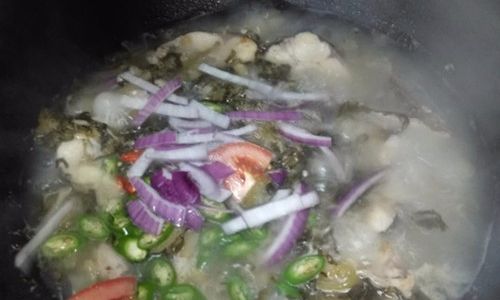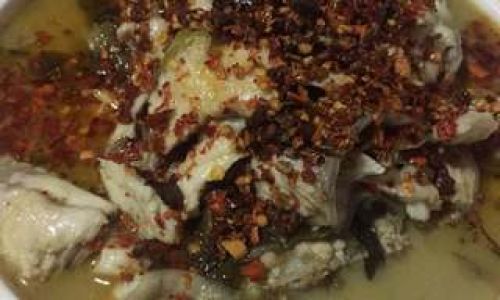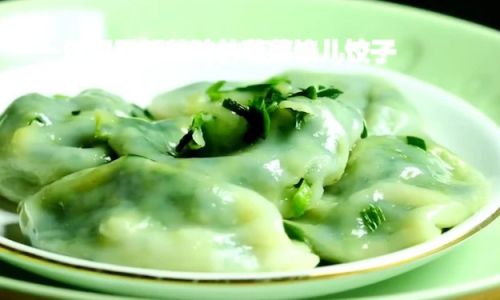Sauerkraut fish, a beloved dish in Chinese cuisine, marries the tangy zest of fermented cabbage with the delicate flavor of fresh fish, creating a harmonious blend of sour, spicy, and savory notes. This traditional recipe, passed down through generations, is a staple in household kitchens across China, especially in regions like Sichuan and Chongqing, where bold flavors reign supreme. While modern adaptations abound, the homemade version retains its rustic charm, relying on simple ingredients and time-honored techniques. In this article, we delve into the intricacies of preparing sauerkraut fish the traditional way, ensuring every bite transports you to the heart of a Chinese home.
A Brief History of Sauerkraut Fish
The origins of sauerkraut fish, or suan cai yu in Mandarin, can be traced back centuries to the Yangtze River basin, where freshwater fish were abundant. Fermented vegetables, including sauerkraut, were a dietary staple due to their long shelf life and probiotic benefits. Over time, resourceful cooks began pairing sauerkraut with fish, a protein-rich ingredient, to create a nourishing and flavorful meal. The dish gained prominence during the Qing Dynasty and has since evolved into a culinary symbol of regional identity, with each area adding its unique twist.
Ingredients: The Foundation of Flavor
To recreate this dish authentically, gather the following ingredients:

- Fish: Opt for a fresh, firm-fleshed variety like grass carp, tilapia, or catfish. Clean and fillet the fish, separating the flesh from the bones. Reserve the head and bones for the broth.
- Sauerkraut: Traditional sauerkraut is made from fermented mustard greens or Chinese cabbage. Rinse it thoroughly to reduce excess saltiness, then chop into bite-sized pieces.
- Aromatics: Ginger, garlic, and green onions form the flavor base. Mince the ginger and garlic; slice the green onions into 2-inch segments.
- Spices: Dried chili peppers, Sichuan peppercorns, and star anise add depth and heat. Adjust quantities based on your spice tolerance.
- Broth: Chicken or fish stock serves as the liquid base. For richness, some recipes incorporate pork fat or lard.
- Seasonings: Light soy sauce, rice vinegar, and a pinch of sugar balance the flavors.
- Garnishes: Fresh cilantro, sesame oil, and additional chili oil elevate the dish’s aroma.
Step-by-Step Preparation
Preparing the Fish
- Filleting: With a sharp knife, remove the fish’s scales, guts, and gills. Rinse under cold water. Separate the fillets from the bones, cutting the flesh into thin slices against the grain.
- Marinating: In a bowl, combine fish slices with 1 tablespoon of soy sauce, 1 teaspoon of rice vinegar, a pinch of white pepper, and 1 tablespoon of cornstarch. Mix gently and set aside for 15–20 minutes. This step tenderizes the fish and locks in moisture.
Crafting the Broth
- Sautéing Aromatics: Heat 2 tablespoons of vegetable oil in a wok over medium heat. Add minced ginger, garlic, and Sichuan peppercorns. Stir-fry until fragrant (30–40 seconds).
- Adding Spices: Toss in dried chili peppers and star anise, toasting briefly to release their oils.
- Incorporating Sauerkraut: Add the chopped sauerkraut and stir-fry for 2–3 minutes. The sauerkraut should soften slightly and absorb the spices’ aroma.
- Simmering the Broth: Pour in 4 cups of chicken or fish stock. Bring to a boil, then reduce heat to a gentle simmer. Add 1 tablespoon of light soy sauce, 1 teaspoon of sugar, and a splash of rice vinegar. Let the broth meld for 10–15 minutes.
Cooking the Fish
- Poaching the Fillets: Gently slide the marinated fish slices into the simmering broth. Avoid overcrowding the wok to prevent cooling the liquid. Cook for 2–3 minutes until the fish turns opaque and firm.
- Adding Bones (Optional): For extra flavor, simmer the fish head and bones in the broth for 5 minutes before straining them out. This imparts a rich, gelatinous texture.
Assembling the Dish
- Layering: Transfer the cooked sauerkraut to a serving bowl. Arrange the poached fish slices on top, ensuring they’re evenly distributed.
- Infusing Oil: In a small pan, heat 2 tablespoons of sesame oil until smoking. Add sliced green onions and a pinch of chili flakes, then pour the hot oil over the fish. This final step “awakens” the dish’s aromatics.
- Garnishing: Sprinkle with fresh cilantro and a drizzle of chili oil for color and heat.
Tips for Perfecting the Dish
- Balance the Flavors: Adjust the sauerkraut-to-fish ratio to suit your taste. Too much sauerkraut can overpower the fish’s delicacy.
- Texture Matters: Avoid overcooking the fish, as it becomes dry and rubbery. Poach just until opaque.
- Fermentation Control: If using store-bought sauerkraut, taste it first. Some brands are saltier than others, requiring additional rinsing.
- Spice Variations: For a milder dish, remove the chili pepper seeds before cooking. Add Sichuan peppercorns generously for a numbing sensatio (ma la flavor).
Regional Adaptations
While the core recipe remains consistent, regional preferences introduce fascinating variations:
- Sichuan Style: Amps up the heat with extra chili peppers and Sichuan peppercorns.
- Guangdong Style: Uses lighter broth and emphasizes the fish’s freshness, often with ginger and spring onions.
- Northeastern China: Incorporates pickled vegetables like radish or cucumber for added crunch.
Health Benefits
Beyond its explosive flavors, sauerkraut fish offers nutritional perks:

- Probiotics: Fermented sauerkraut aids digestion and boosts gut health.
- Omega-3 Fatty Acids: Fish like salmon or mackerel (if substituted) provide heart-healthy fats.
- Low-Calorie: When prepared without excessive oil, the dish is relatively light yet satisfying.
Serving Suggestions
Sauerkraut fish shines as a centerpiece dish, paired with:
- Steamed Rice: The broth’s sourness cuts through the rice’s starchiness.
- Hand-Pulled Noodles: For a hearty meal, toss noodles into the broth after serving.
- Stir-Fried Greens: Balance the meal with a side of bok choy or gai lan.
Storing Leftovers
Refrigerate leftover sauerkraut fish in an airtight container for up to 3 days. Reheat gently on the stove, adding a splash of water if the broth thickens. Avoid freezing, as the fish’s texture may deteriorate.

Conclusion
The allure of homemade sauerkraut fish lies in its ability to transcend time and place, offering a taste of tradition with every spoonful. By adhering to time-tested techniques and embracing the interplay of flavors, even novice cooks can master this iconic dish. Whether enjoyed on a chilly evening or shared with loved ones during festive gatherings, sauerkraut fish remains a testament to the enduring power of home-cooked meals. So, gather your ingredients, ignite your wok, and let the sizzling aromas transport you to a world where every meal is a celebration of heritage and flavor.






0 comments